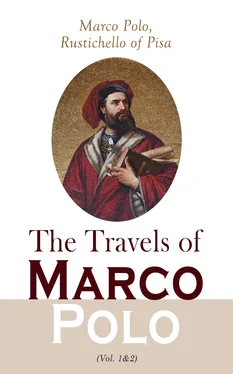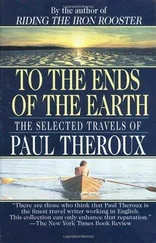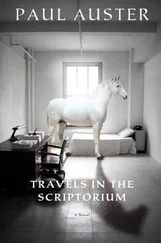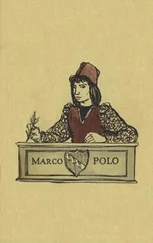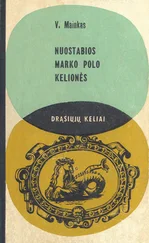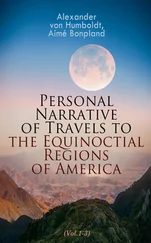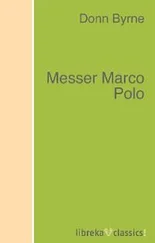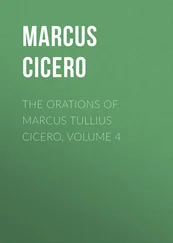One form of the old Church Legend was that the Three were buried at Sessania Adrumetorum (Hadhramaut) in Arabia, whence the Empress Helena had the bodies conveyed to Constantinople, [and later to Milan in the time of the Emperor Manuel Comnenus. After the fall of Milan (1162), Frederic Barbarossa gave them to Archbishop Rainald of Dassel (1159–1167), who carried them to Cologne (23rd July, 1164).—H. C.]
The names given by Polo, Gaspar, Melchior, and Balthasar, have been accepted from an old date by the Roman Church; but an abundant variety of other names has been assigned to them. Hyde quotes a Syriac writer who calls them Aruphon, Hurmon, and Tachshesh, but says that some call them Gudphorbus, Artachshasht, and Labudo; whilst in Persian they were termed Amad, Zad-Amad, Drust-Amad, i.e. Venit, Cito Venit, Sincerus Venit . Some called them in Greek, Apellius, Amerus, and Damascus, and in Hebrew, Magaloth, Galgalath, and Saracia, but otherwise Ator, Sator, and Petatoros! The Armenian Church used the same names as the Roman, but in Chaldee they were Kaghba, Badadilma, Badada Kharida. ( Hyde, Rel. Vet. Pers. 382–383; Inchofer, ut supra; J. As. sér. VI. IX. 160.)
[Just before going to press we have read Major Sykes' new book on Persia . Major Sykes (ch. xxiii.) does not believe that Marco visited Baghdád, and he thinks that the Venetians entered Persia near Tabriz, and travelled to Sultania, Kashán, and Yezd. Thence they proceeded to Kerman and Hormuz. We shall discuss this question in the Introduction.—H. C.]
Table of Contents
OF THE EIGHT KINGDOMS OF PERSIA, AND HOW THEY ARE NAMED.
Now you must know that Persia is a very great country, and contains eight kingdoms. I will tell you the names of them all.
The first kingdom is that at the beginning of Persia, and it is called CASVIN; the second is further to the south, and is called CURDISTAN; the third is LOR; the fourth [SUOLSTAN]; the fifth ISTANIT; the sixth SERAZY; the seventh SONCARA; the eighth TUNOCAIN, which is at the further extremity of Persia. All these kingdoms lie in a southerly direction except one, to wit, Tunocain; that lies towards the east, and borders on the (country of the) Arbre Sol.[NOTE 1]
In this country of Persia there is a great supply of fine horses; and people take them to India for sale, for they are horses of great price, a single one being worth as much of their money as is equal to 200 livres Tournois; some will be more, some less, according to the quality.[NOTE 2] Here also are the finest asses in the world, one of them being worth full 30 marks of silver, for they are very large and fast, and acquire a capital amble. Dealers carry their horses to Kisi and Curmosa, two cities on the shores of the Sea of India, and there they meet with merchants who take the horses on to India for sale.
In this country there are many cruel and murderous people, so that no day passes but there is some homicide among them. Were it not for the Government, which is that of the Tartars of the Levant, they would do great mischief to merchants; and indeed, maugre the Government, they often succeed in doing such mischief. Unless merchants be well armed they run the risk of being murdered, or at least robbed of everything; and it sometimes happens that a whole party perishes in this way when not on their guard. The people are all Saracens, i.e. followers of the Law of Mahommet.[NOTE 3]
In the cities there are traders and artizans who live by their labour and crafts, weaving cloths of gold, and silk stuffs of sundry kinds. They have plenty of cotton produced in the country; and abundance of wheat, barley, millet, panick, and wine, with fruits of all kinds.
[Some one may say, "But the Saracens don't drink wine, which is prohibited by their law." The answer is that they gloss their text in this way, that if the wine be boiled, so that a part is dissipated and the rest becomes sweet, they may drink without breach of the commandment; for it is then no longer called wine, the name being changed with the change of flavour.[NOTE 4]]
NOTE 1.—The following appear to be Polo's Eight Kingdoms:—
I. KAZVÍN; then a flourishing city, though I know not why he calls it a kingdom. Persian 'Irák, or the northern portion thereof, seems intended. Previous to Hulaku's invasion Kazvín seems to have been in the hands of the Ismailites or Assassins.
II. KURDISTAN. I do not understand the difficulties of Marsden, followed
by Lazari and Pauthier, which lead them to put forth that Kurdistan is not
Kurdistan but something else. The boundaries of Kurdistan according to
Hamd Allah were Arabian 'Irak, Khuzistán, Persian 'Irak, Azerbaijan and
Diarbekr. ( Dict. de la P. 480.) [Cf. Curzon, Persia pass. —H. C.] Persian Kurdistan, in modern as in mediaeval times, extends south beyond Kermanshah to the immediate border of Polo's next kingdom, viz.:
III. LÚR or Lúristán. [On Lúristán, see Curzon, Persia , II. pp. 273–303, with the pedigree of the Ruling Family of the Feili Lurs (Pusht-i-Kuh), p. 278.—H. C.] This was divided into two principalities, Great Lúr and Little Lúr, distinctions still existing. The former was ruled by a Dynasty called the Faslúyah Atabegs, which endured from about 1155 to 1424, [when it was destroyed by the Timurids; it was a Kurd Dynasty, founded by Emad ed-din Abu Thaher (1160–1228), and the last prince of which was Ghiyas ed-din (1424). In 1258 the general Kitubuka (Hulagu's Exp. to Persia , Bretschneider, Med. Res. I. p. 121) is reported to have reduced the country of Lúr or Lúristán and its Atabeg Teghele.—H. C.]. Their territory lay in the mountainous district immediately west of Ispahan, and extended to the River of Dizfúl, which parted it from Little Lúr. The stronghold of the Atabegs was the extraordinary hill fort of Mungasht, and they had a residence also at Aidhej or Mal-Amir in the mountains south of Shushan, where Ibn Batuta visited the reigning Prince in 1327. Sir H. Rawlinson has described Mungasht, and Mr. Layard and Baron de Bode have visited other parts, but the country is still very imperfectly known. Little Lúristán lay west of the R. Dizfúl, extending nearly to the Plain of Babylonia. Its Dynasty, called Kurshid, [was founded in 1184 by the Kurd Shodja ed-din Khurshid, and existed till Shah-Werdy lost his throne in 1593.—H. C.].
The Lúrs are akin to the Kurds, and speak a Kurd dialect, as do all those Ilyáts, or nomads of Persia, who are not of Turkish race. They were noted in the Middle Ages for their agility and their dexterity in thieving. The tribes of Little Lúr "do not affect the slightest veneration for Mahomed or the Koran; their only general object of worship is their great Saint Baba Buzurg," and particular disciples regard with reverence little short of adoration holy men looked on as living representatives of the Divinity. ( Ilchan. I. 70 seqq.; Rawlinson in J. R. G. S. IX.; Layard in Do. XVI. 75, 94; Ld. Strangford in J. R. A. S. XX. 64; N. et E. XIII. i. 330, I. B. II. 31; D'Ohsson , IV. 171–172.)
IV. SHÚLISTÁN, best represented by Ramusio's Suolstan , whilst the old French texts have Cielstan (i.e. Shelstán); the name applied to the country of the Shúls , or Shauls , a people who long occupied a part of Lúristán, but were expelled by the Lúrs in the 12th century, and settled in the country between Shíráz and Khuzistán (now that of the Mamaseni, whom Colonel Pelly's information identifies with the Shúls), their central points being Naobanján and the fortress called Kala' Safed or "White Castle." Ibn Batuta, going from Shiraz to Kazerun, encamped the first day in the country of the Shúls, "a Persian desert tribe which includes some pious persons." ( Q. R. p. 385; N. et E. XIII. i. 332–333; Ilch. I. 71; J. R. G. S. XIII. Map; I. B. II. 88.) ["Adjoining the Kuhgelus on the East are the tents of the Mamasenni (qy. Mohammed Huseini) Lúrs, occupying the country still known as Shúlistán, and extending as far east and south-east as Fars and the Plain of Kazerun. This tribe prides itself on its origin, claiming to have come from Seistán, and to be directly descended from Rustam, whose name is still borne by one of the Mamasenni clans." (Curzon, Persia , II. p. 318.)—H. C.]
Читать дальше
